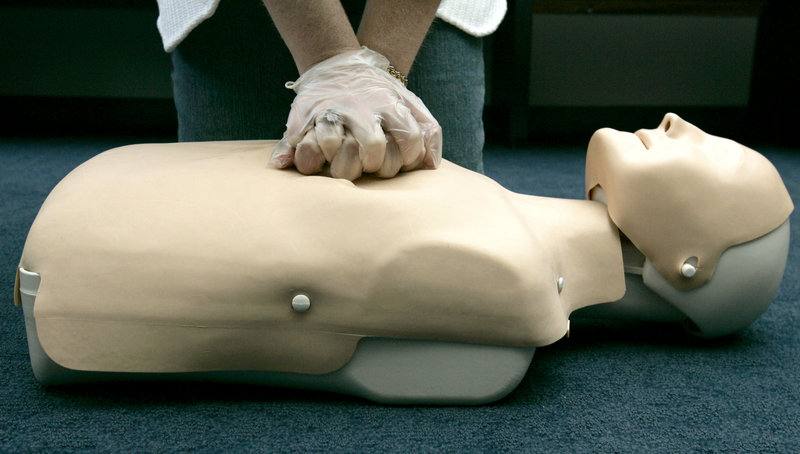– The Associated Press
DALLAS – New guidelines out today switch up the steps for CPR, telling rescuers to start with hard, fast chest presses before giving mouth-to-mouth.
The change puts “the simplest step first” for traditional CPR, said Dr. Michael Sayre, co-author of the American Heart Association guidelines.
In recent years, CPR guidance has been revised to put more emphasis on chest pushes for sudden cardiac arrest. In 2008, the heart group said untrained bystanders or those unwilling to do rescue breaths could do hands-only CPR until paramedics arrive or a defibrillator is used to restore a normal heartbeat.
Now, the group says everyone from professionals to bystanders who use standard CPR should begin with chest compressions instead of opening the victim’s airway and breathing into their mouth first.
The change ditches the old ABC training — airway-breathing-compressions. That called for rescuers to give two breaths first, then alternate with 30 presses. Sayre said that approach took time and delayed chest presses, which keep the blood circulating.
“When the rescuer pushes hard and fast on the victim’s chest, they’re really acting like an artificial heart. That blood carries oxygen that helps keep the organs alive till help arrives,” said Sayre, an emergency doctor at Ohio State University Medical Center.
“Put one hand on top of the other and push really hard,” he said.
Sudden cardiac arrest — when the heart suddenly stops beating — can occur after a heart attack or as a result of electrocution or near-drowning. The person collapses, stops breathing normally and is unresponsive. Survival rates from cardiac arrest outside the hospital vary across the country — from 3 percent to 15 percent, according to Sayre.
Under the revised guidelines, rescuers using traditional CPR, or cardiopulmonary resuscitation, should start chest compressions immediately — 30 chest presses, then two breaths. The change applies to adults and children, but not newborns.
One CPR researcher, though, expressed disappointment with the new guidelines. Dr. Gordon Ewy of the University of Arizona Sarver Heart Center thinks everyone should do hands-only CPR for sudden cardiac arrest, and skipping mouth-to-mouth.
He said the guidelines could note the cases where breaths should still be given, like near-drownings and drug overdoses, when breathing problems likely led to the cardiac arrest.
Ewy is one of the authors of a recently published study that showed more people survived cardiac arrest when a bystander gave them hands-only CPR, compared to CPR with breaths.
The guidelines issued today also say that rescuers should be pushing deeper, at least 2 inches in adults. Rescuers should pump the chest of the victim at a rate of at least 100 compressions a minute — some say a good guide is the beat of the old disco song “Stayin’ Alive.”
Dr. Ahamed Idris, of the University of Texas Southwestern in Dallas, said people sometimes fear that they’ll hurt the patient. “We want to make sure people understand they’re not going to hurt the person they’re doing CPR on by pressing as hard as they can,” he said.
Copy the Story LinkSend questions/comments to the editors.



Success. Please wait for the page to reload. If the page does not reload within 5 seconds, please refresh the page.
Enter your email and password to access comments.
Hi, to comment on stories you must . This profile is in addition to your subscription and website login.
Already have a commenting profile? .
Invalid username/password.
Please check your email to confirm and complete your registration.
Only subscribers are eligible to post comments. Please subscribe or login first for digital access. Here’s why.
Use the form below to reset your password. When you've submitted your account email, we will send an email with a reset code.